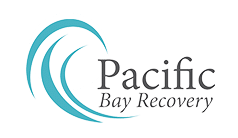Underlying Psychology of This Argument
When an offender commits a crime but is also a substance addict, most people think going to prison is the better option. One must be punished for committing crimes. Yet, if a drug addict goes to prison, there is little chance of getting proper treatment to overcome any addiction, which likely led to the crime in the first place.
The threat of prison is meant to discourage people from committing crimes and losing their freedom. Without proper treatment and further follow-up assessments after recovery, then spending time in prison becomes a revolving door.
Instead, drug addicts prisoner goes through withdrawals without medical assistance or the psychological treatment needed to reset a prisoner’s mind, leaving the prisoner in much the same place as when they first started their addictive behaviors. The mind has not been adjusted to thinking any differently which leads to encountering the old triggers and further criminal behavior when they leave prison.
Furthermore, prison is often a brutal place where inmates are abused and even killed when getting on the wrong side of prison guards or other inmates connected with prison gangs. This creates a lot of stress in the prison population if one is always looking over one’s shoulder to stay ahead of potential attacks.
When drug addicts, whose physical and mental chemical makeup is not treated properly, along with prison abuse added on top, the inmate loses hope of achieving a good life when getting out. Many come out bitter and twisted, which does nothing for our society and its safety.
A recent 2022 report, published by Prison Policy Initiative, shows statistics in the different nationwide prison types, such as State Prisons (1,042,000 inmates), Local Jails (547,000), and Federal Prisons and Jails (208,000). There are other variable categories, such as Youths (36,000), Territorial Prisons (10,000), Immigration Detention (32,000), Involuntary Commitment (22,000), Indian Country (2,000), and Military (1,000). The general statistic of all prisoners is 573 for every 100,000 United States residents, which is the highest rate across the globe.
Prisons and Jails Not Equipped to Handle Withdrawal Programs

With these high numbers of imprisoned people, there are also those who did not receive treatments for substance addiction, leaving prisoners to be abused by lack of proper assistance when going through withdrawals. The National Institute on Drug Abuse reported that over 65 percent of drug addicts prisoner had some type of untreated substance use disorder (SUD). Twenty percent of the population were under the influence of a substance during the commission of their crime.
Such prisoners must receive proper treatment when sentenced to prison or jail. If there is no capability at a prison, then the drug addicts must be admitted into a rehabilitation center to go through a full treatment of withdrawal and behavioral mental therapy. One problem is how does a prisoner that is a drug addict enters a program and remains under police guards while at the center.
Those convicted of murder must be isolated from the general population. Unless there is a rehabilitation center at the prison, or located close by, then there is the likelihood that prisoners will not receive treatment or get better.
Either way, both options cost a lot of money, borne by society. Yet, available treatment programs mean there is less crime overall, and lower costs in formerly high-crime communities with reduced crimes. In summary, crime costs the country more than paying for rehabilitation programs for the prison population. For 2007, drug use cost our society $193 billion, with $113 billion paid for costs with drug-related crimes and the justice system. Treatments for drug use cost $14.6 billion, which shows the benefits of using these programs.
Benefits of Prisoner Rehabilitation Programs
Suitable rehabilitation program for drug addicts show that even those who may not initially desire to change, eventually do change their perception of how drugs and other substances negatively affect their lives. These programs also succeed when prisoners, after they leave prison, are encouraged to continue to attend meetings for reinforcing positive behaviors.
Future employers are also encouraged to hire former prisoners if they can show they attended rehabilitation programs. If prisoners also continue to learn new work skills while in prison, this becomes helpful when applying for jobs after returning home.
While rehabilitation from substance abuse and addiction is hard to do in the initial stage, it is beneficial, not only to those going through it, but the people surrounding the person who needs help. A rehabilitated person also becomes a productive member of society, and that person can take pride in successfully overcoming such a difficult time in their life.

Contact Us if You Need Help
San Diego Drug Addiction and Substance Abuse Rehabilitation Center can help you with any substance addiction and/or mental issue you might have so you can regain a happy and functional lifestyle again. Call Pacific Bay Recovery for a free consultation and to set up an appointment to start getting help as soon as possible. 619-350-8220.


